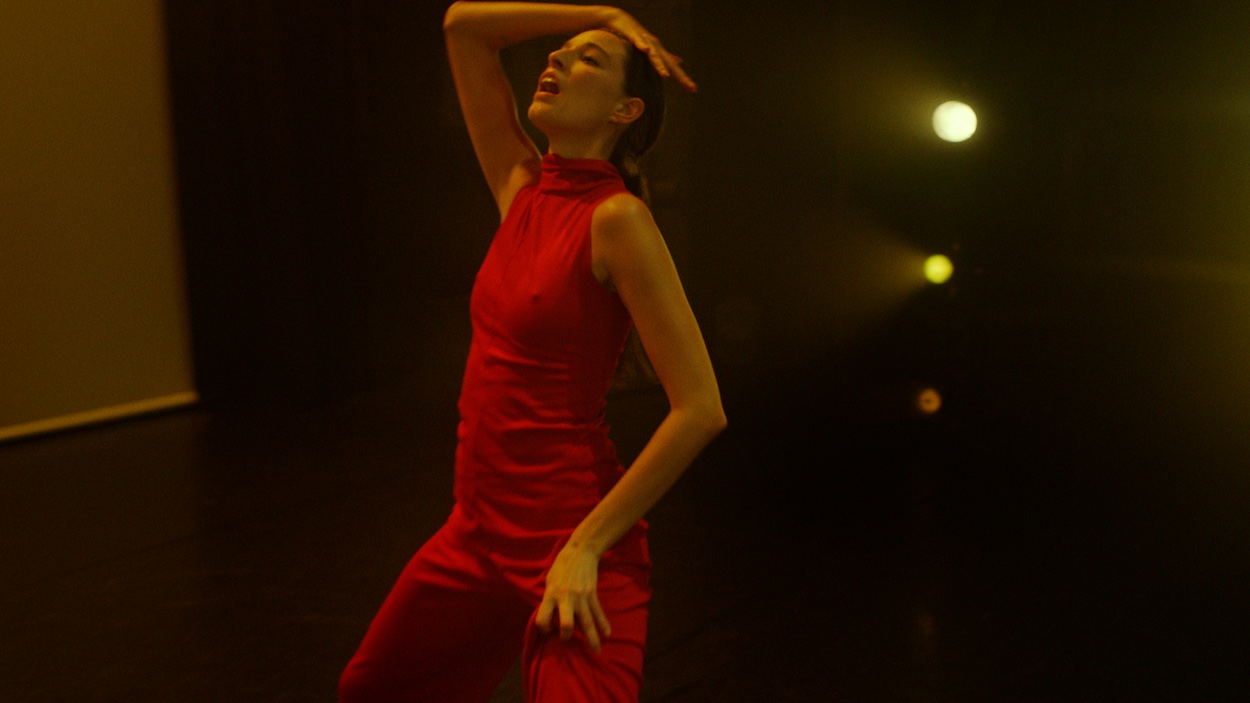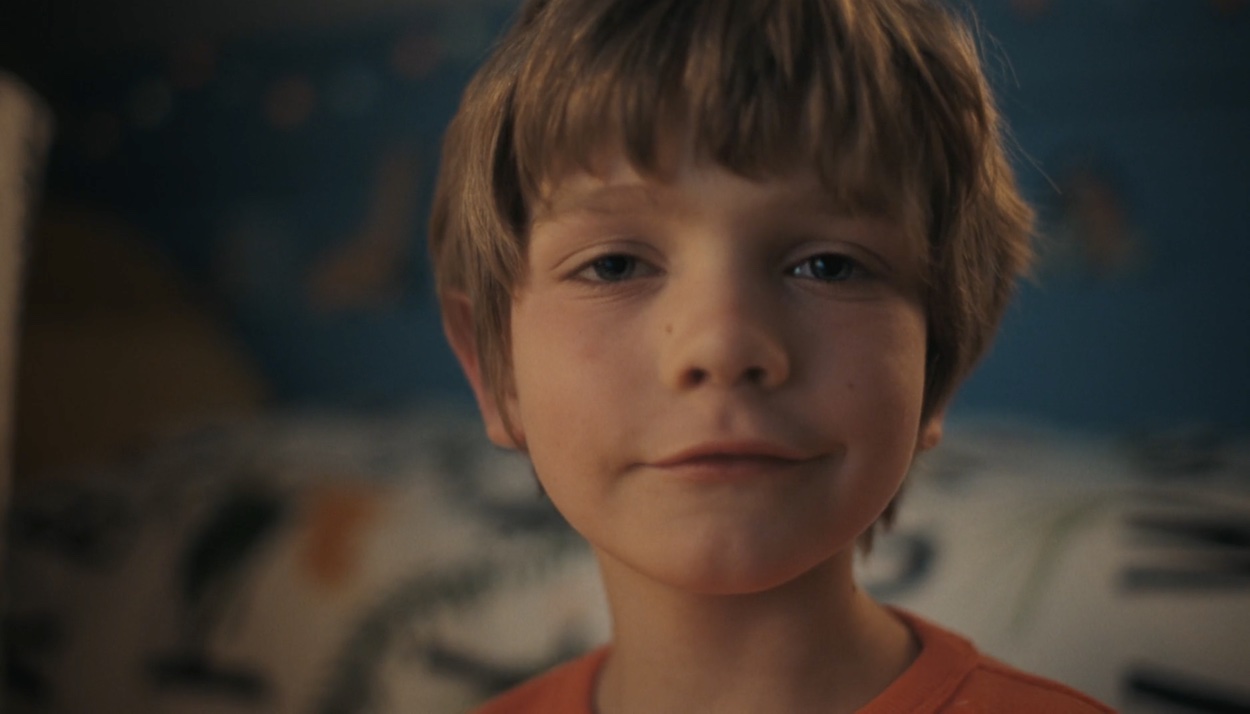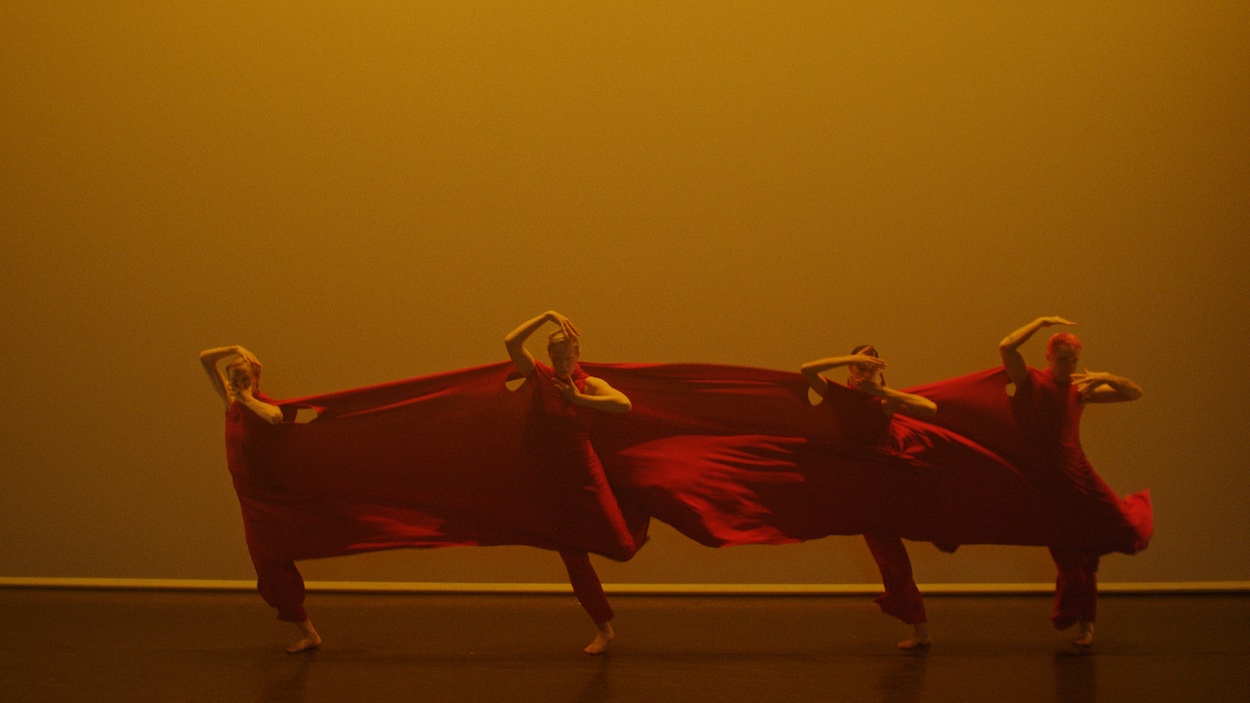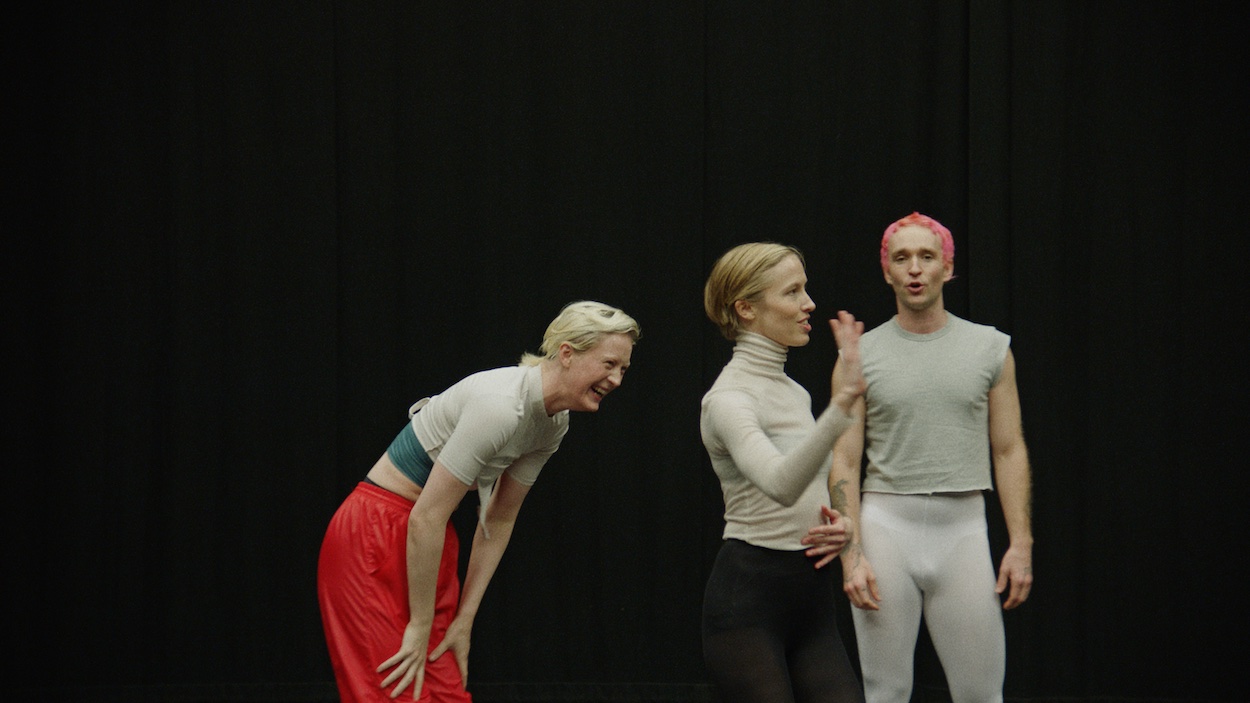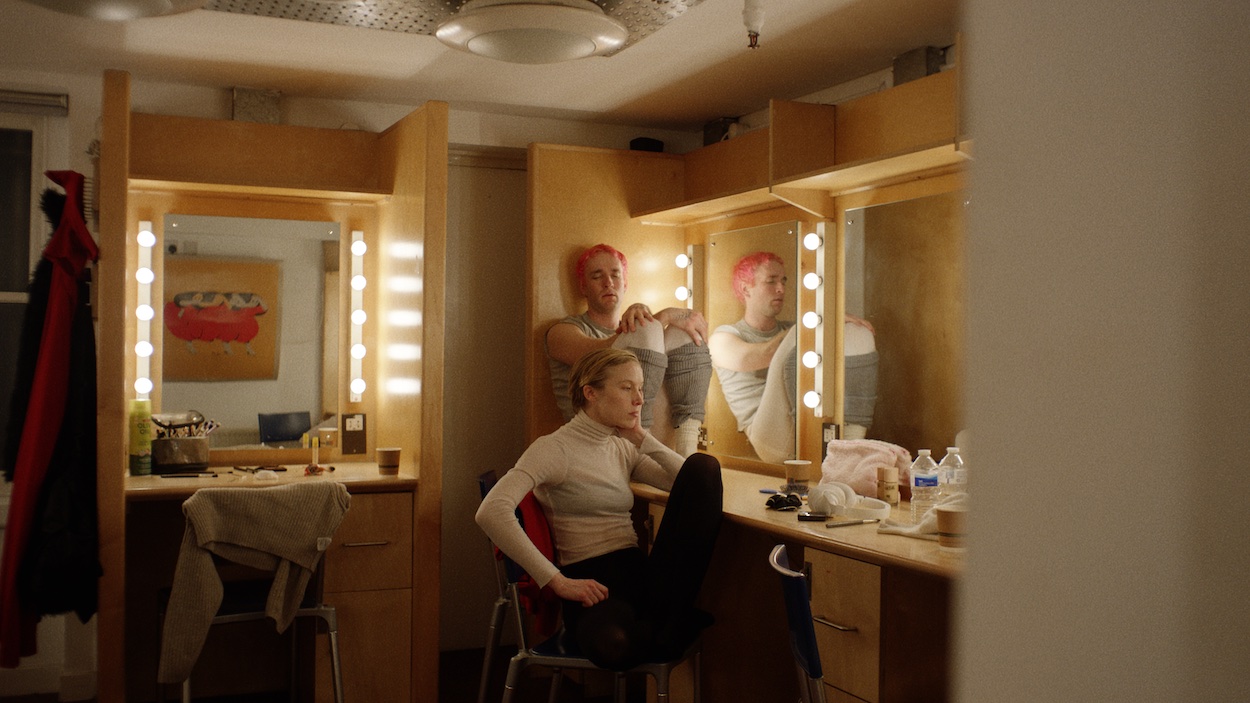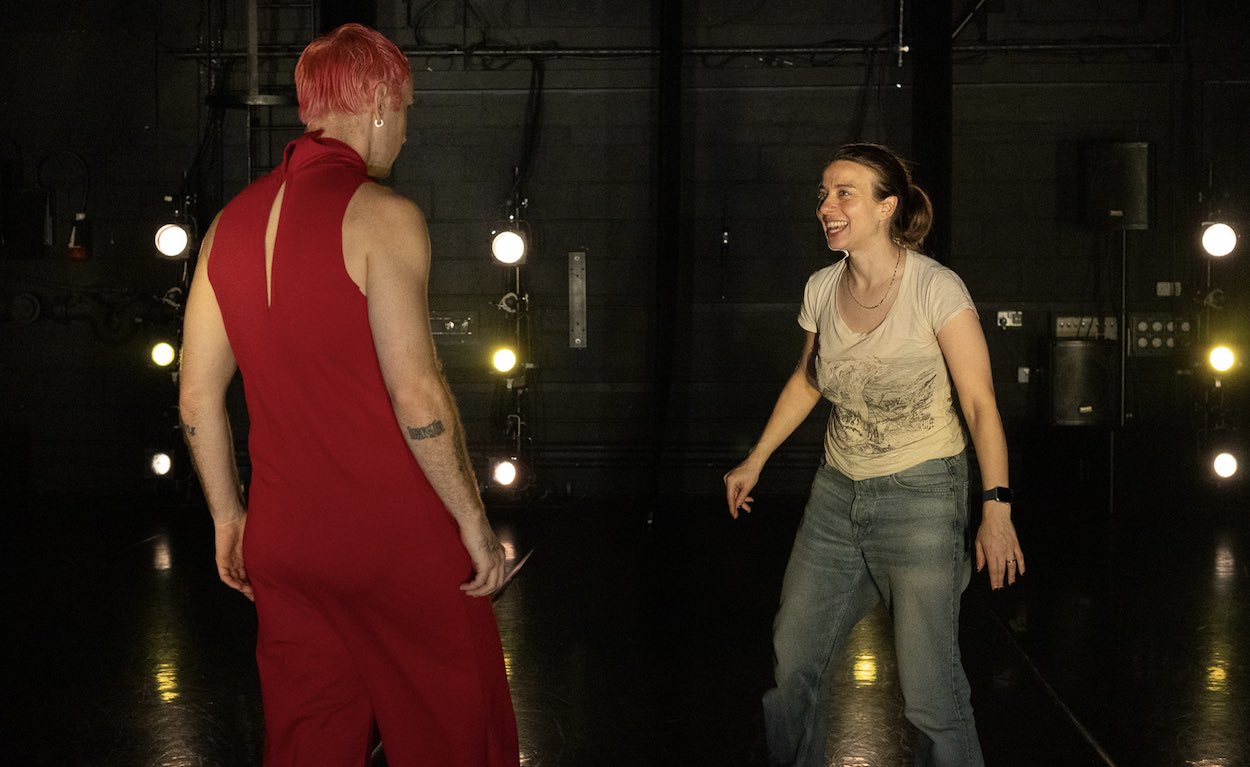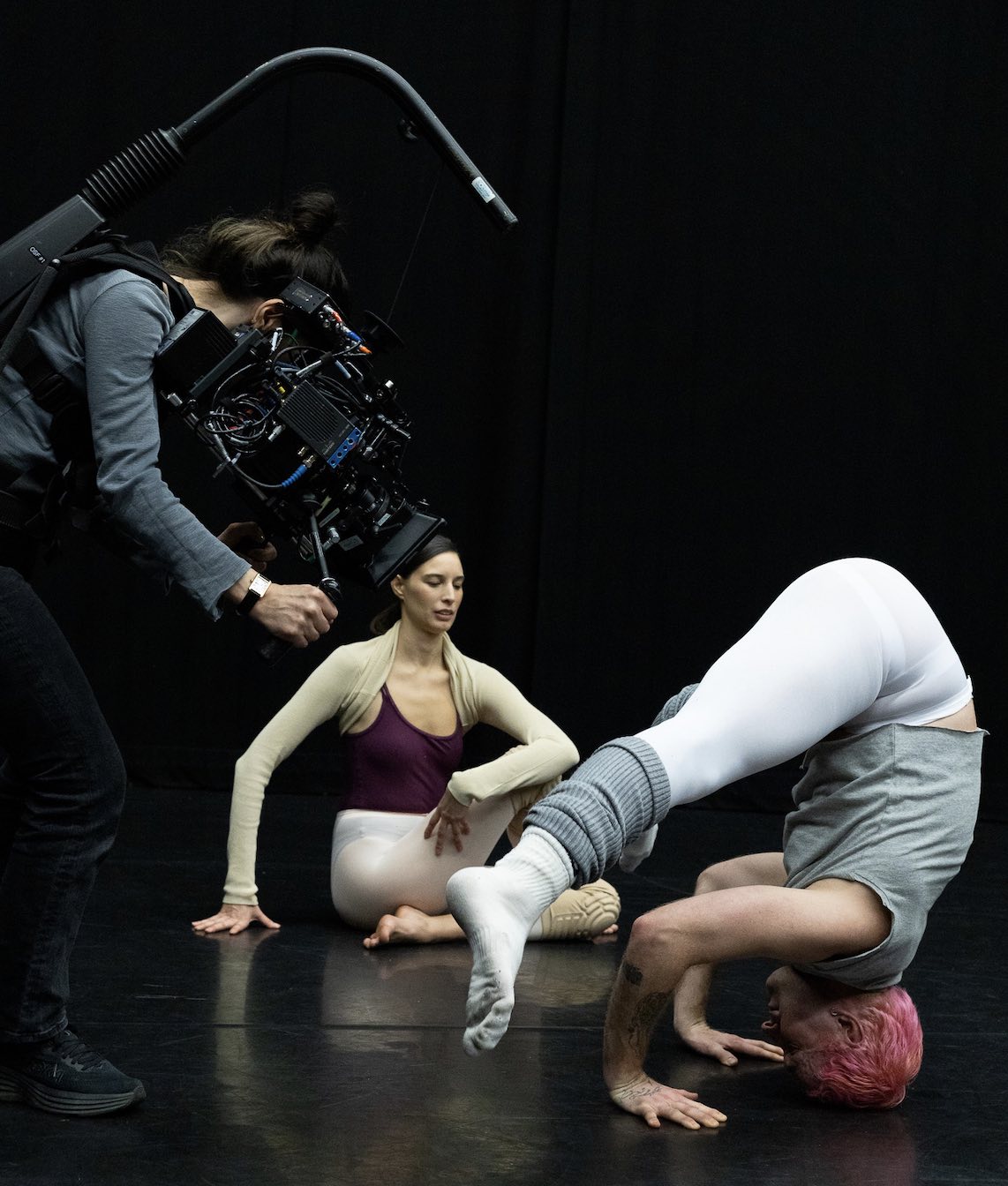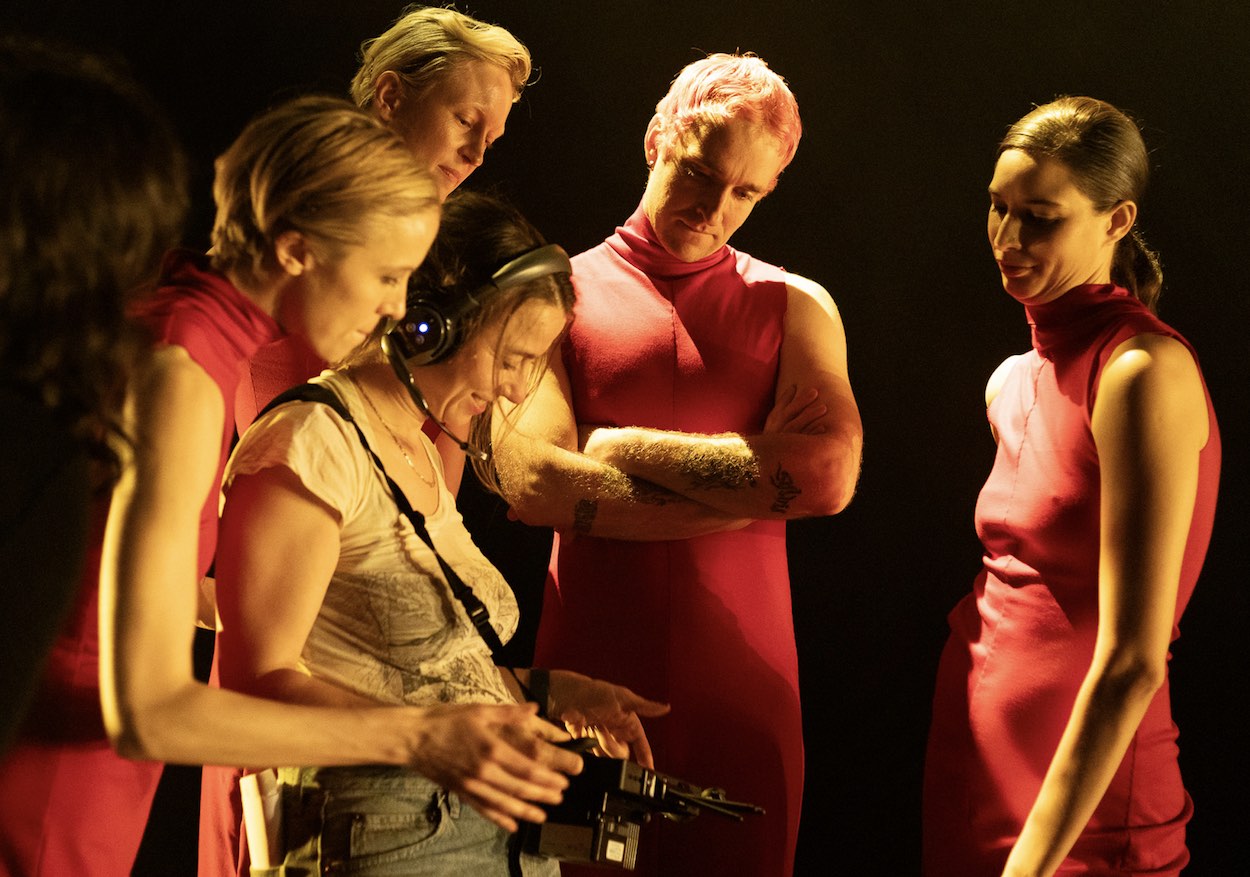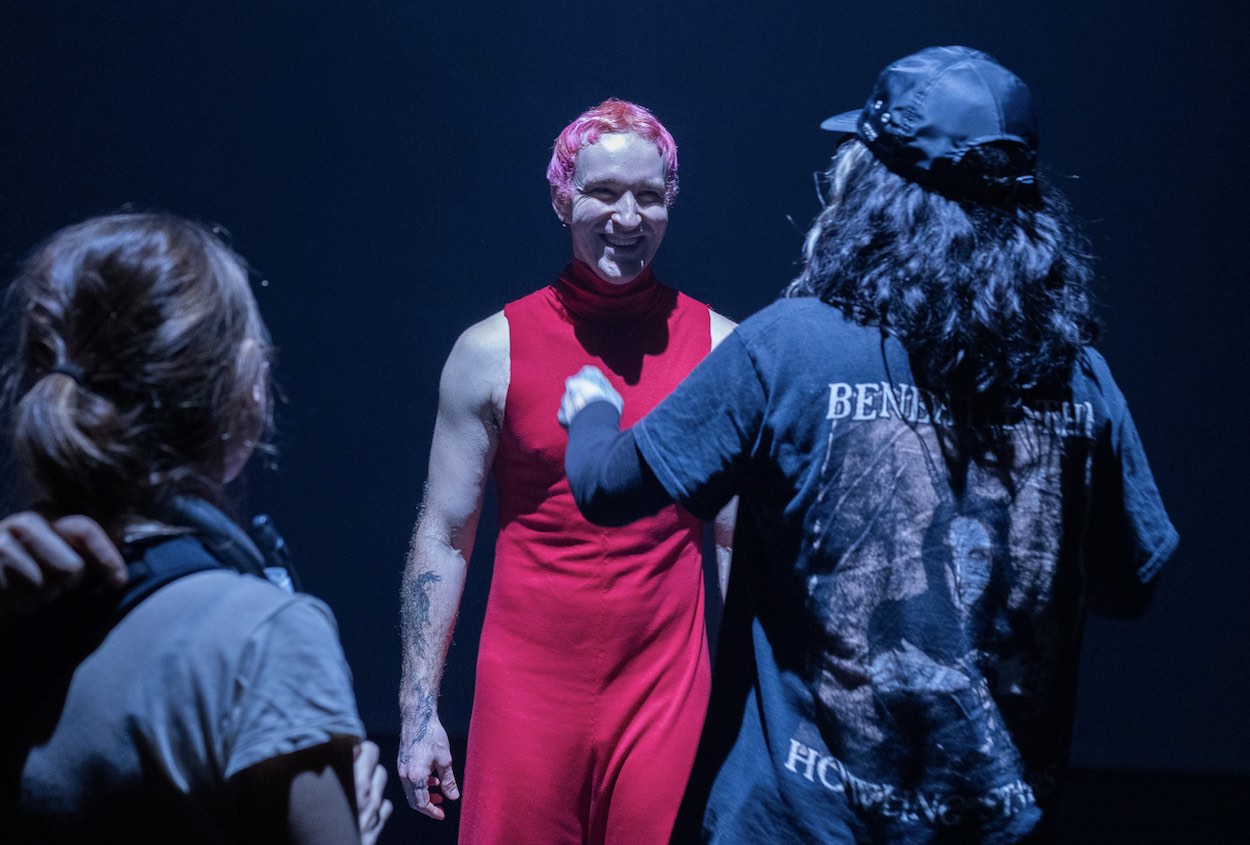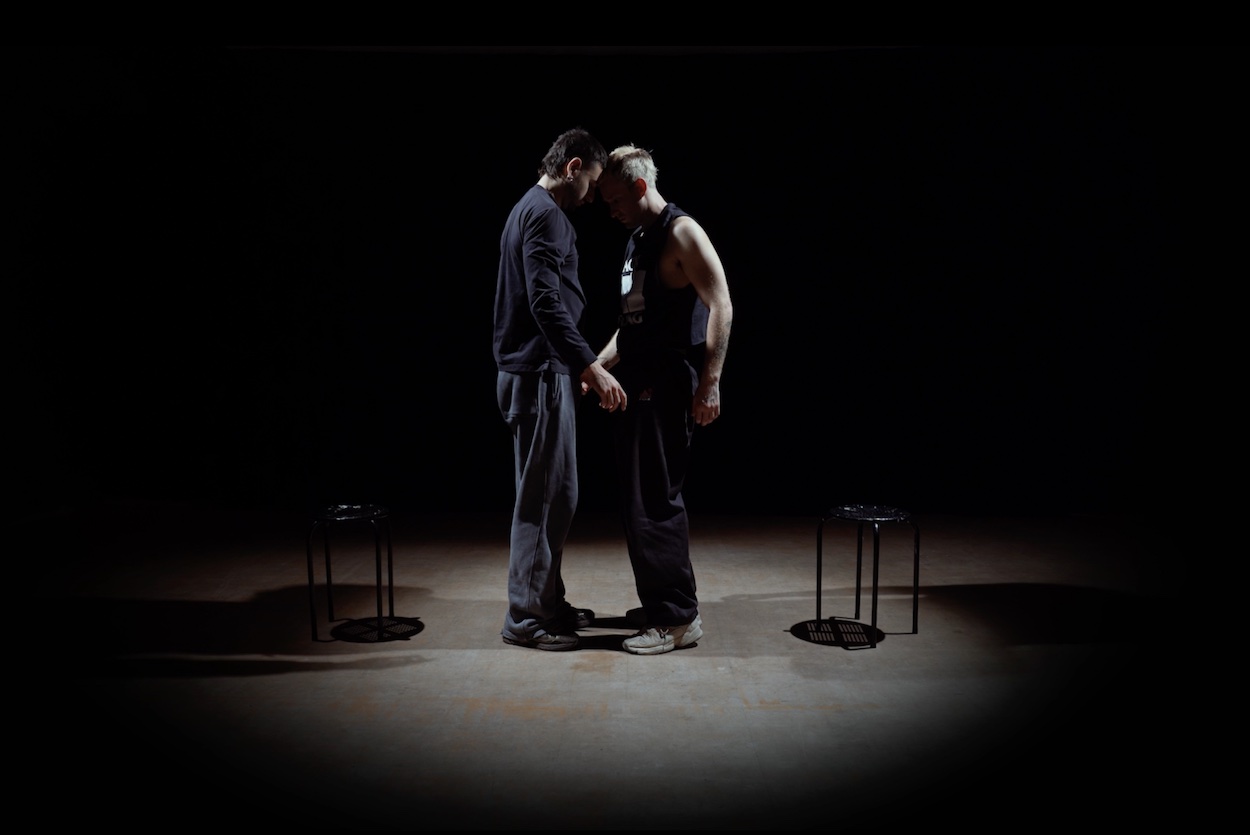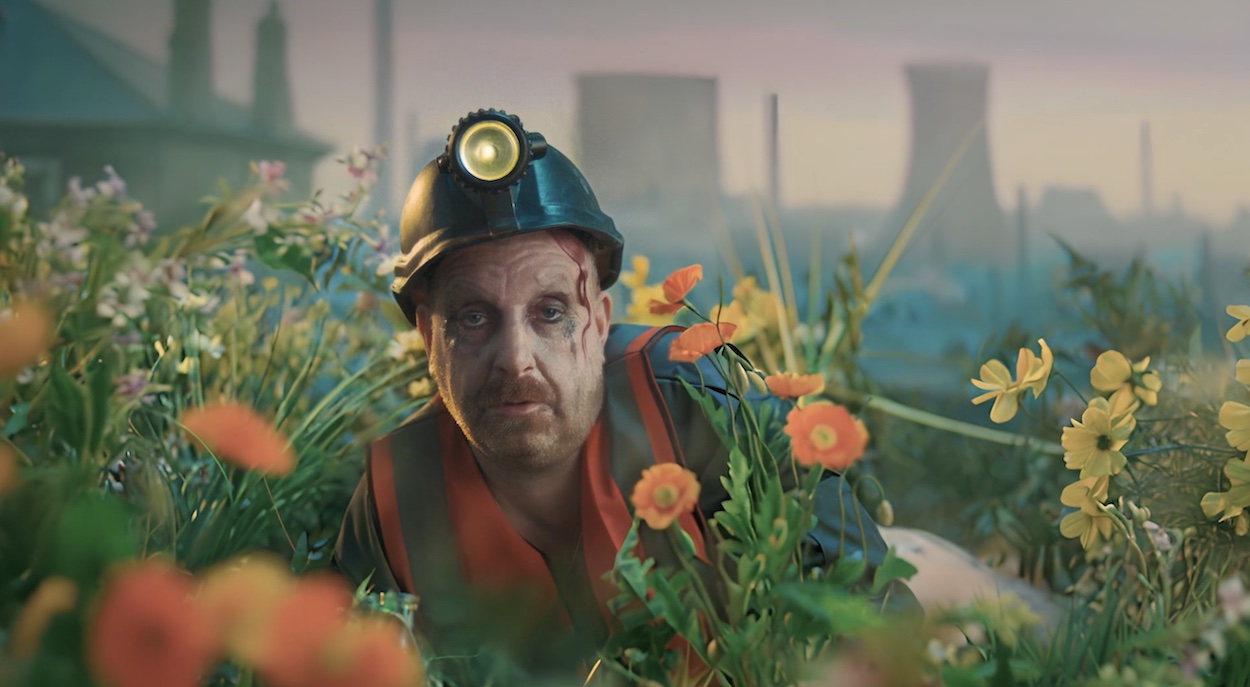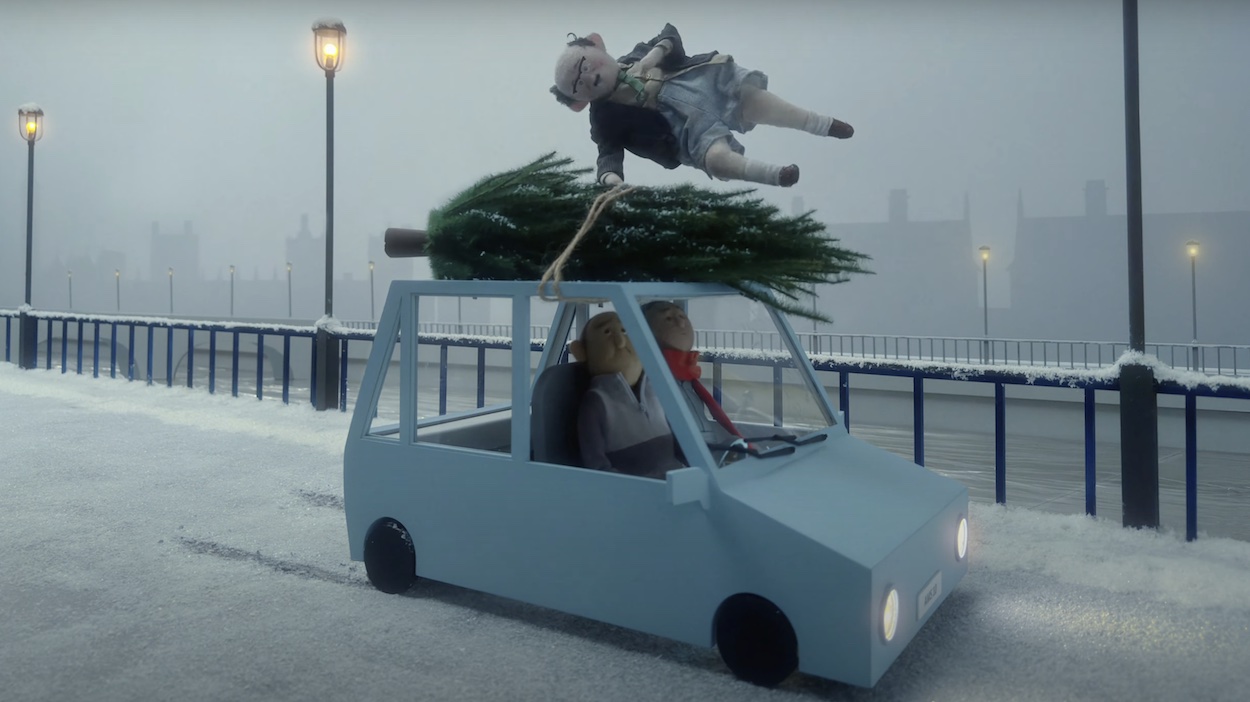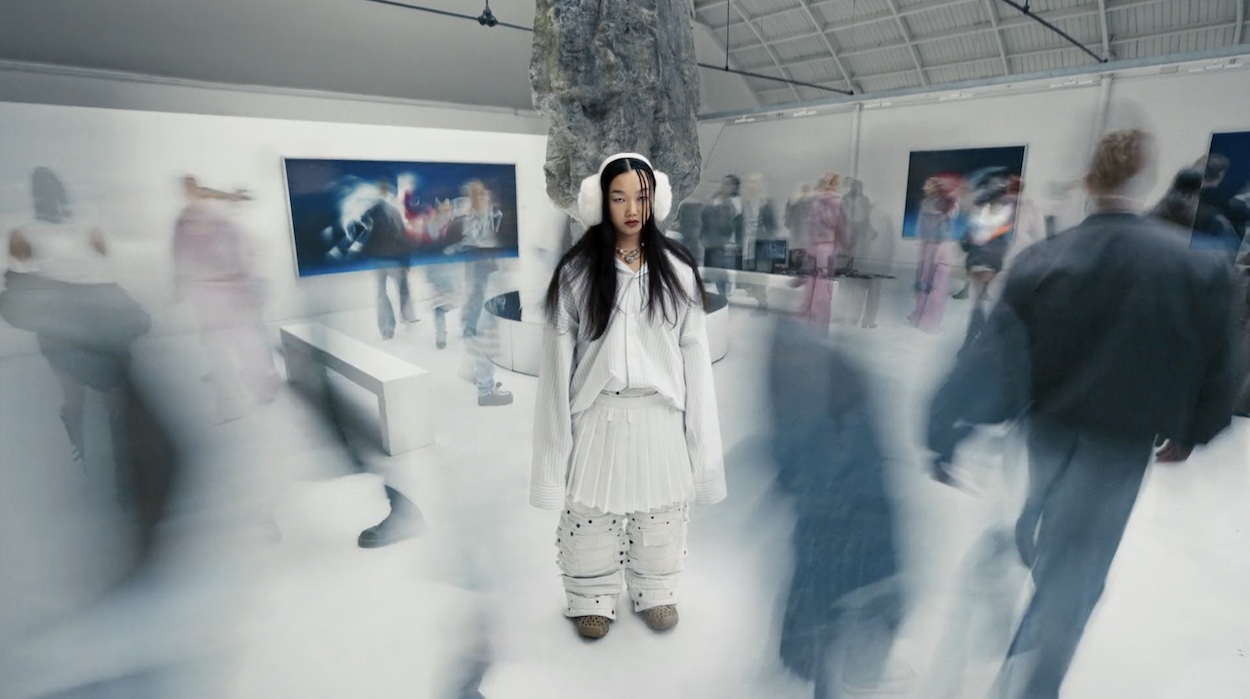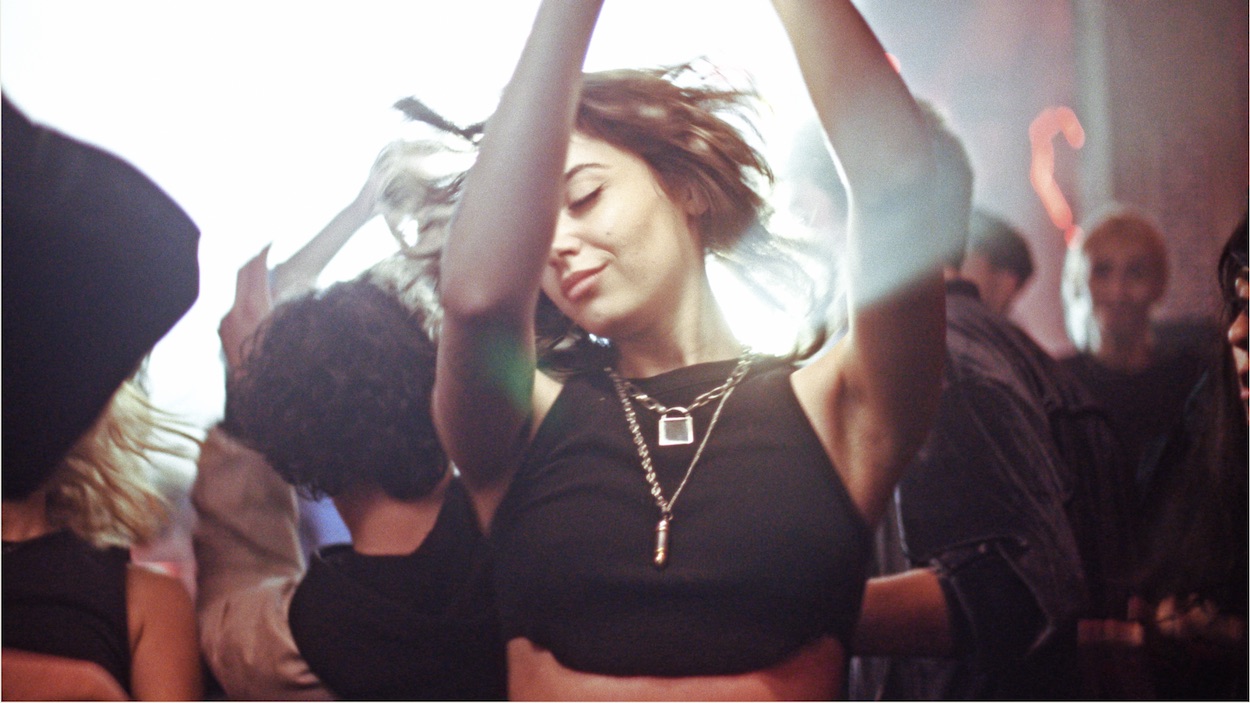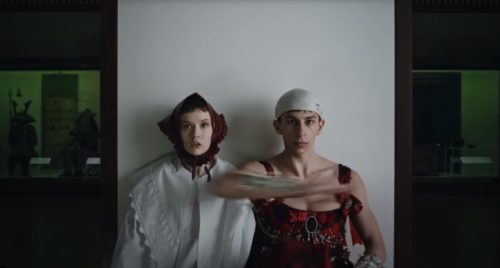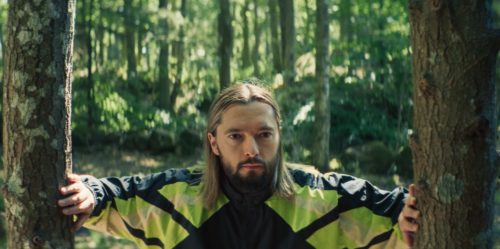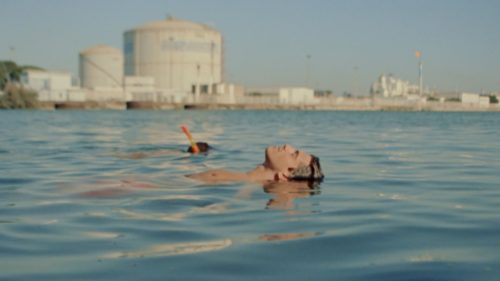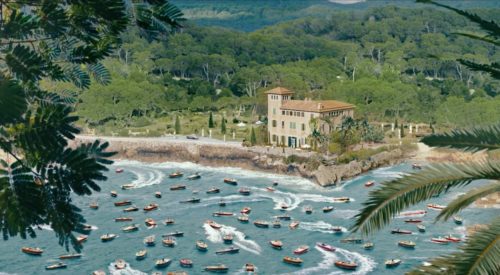Future Islands, The Thief
Dance plays a big part in your work, be it commercials for Mulberry and Axe or music videos like Squid ‘O Monolith’, but ‘The Thief’ feels a bit different – it’s a celebration of the process of creating a contemporary dance piece, from developing the choreography to rehearsal to actual show, plus, it’s shot in the home of contemporary dance itself, Sadler’s Wells. Tell us a bit about how you got involved with the project and what the brief was?
My love of dance is rooted in a fascination (obsession?) with performance. Specifically, I’m interested in the work that goes into a performance. It’s so mercurial and exhilarating to see someone transform themselves – and for me to be along for the ride.
The brief for Future Islands was to bring the characters on the album cover to life (Beedallo’s illustration of four dancers mid-pose). So, ‘The Thief’ felt like a place to explore the process of embodying. Often dancers are used as decoration and that’s so detached. So here, I wanted to show the dancers as real people, which involves showing all the work, all the agony and messiness and fun that goes into it.
You were given the People Who Aren’t There Anymore album cover as a creative starting point by the band, as well as references including avant-garde choreographer Martha Graham and the modernist sets of sculptor and architect Isamu Noguchi, how did you bring those creative touchpoints into the shoot?
The references were SO precise – Martha Graham’s ‘Night Journey’; ‘Clytemnestra’ and ‘Appalachian Spring’ as well as Isamu Noguchi’s stage designs. It was so refreshing to see a band geek out like that, it really raised the bar creatively. The idea was to examine Martha’s techniques and find a contemporary interpretation. Her work is so beautiful but also incredibly strict, so it felt important to be able to rebel.
A shot from Future Islands, The Thief
Ted Rogers – who’s a frequent creative collaborator of yours – was behind the choreography as well as appearing as one of the dancers. What was it like working together on this project, have you developed a creative shorthand and preferred way of working over the course of your many collaborations?
Ted and I are such close collaborators. They’re incredibly talented. We had a whirlwind of non-stop projects in a short space of time – something like five films in six months. It has been wild. Every project brings out new ideas and pushes us both harder. Most of all it’s been about building trust. We test a lot and spend time rehearsing with just the two of us. We’ve laughed and cried and worked through difficulties, and that’s allowed us to feel safe. That way you can experiment and hone and know the other is going to pick you up. And we’re now co-directing a film as part of Ted’s residency as performance artist at Tracey Emin’s TKE Studios which is really exciting.
A lot of the process for ‘The Thief’ came from an experimental dance film Ted and I made called ‘There Are No Mistakes’ (a site-specific installation that’s showing again at Riff Raff HQ soon). It’s a study of performance with Ted and another wonderful dancer, Jonny Vieco copying each other. It sounds ridiculously simple, but the results were mesmerising. They’d be messing about and then suddenly it clicks and there’s a full performance and it’s incredibly moving to watch. That transformative moment for me is really magical and sort of what it’s all about. When there’s trust and you get out of intellectualising things, it can be really freeing.
Ivana and Ted Rogers on set
What was the shoot like, requiring such gruellingly and intensely physical performances from the dancers? What were the most challenging aspects of production?
It was a joy and a privilege to shoot at Sadlers Wells. The location meant a lot to me personally, as the place I saw Pina Bausch’s ‘The Rites of Spring’ when I was 18, with all the mud and sweat and emotion. I was like: ‘What was that?! What did I feel? How can I feel that again?’ And for Ted and the dancers, there was a real significance to performing there too, it’s like a holy place in dance. It made us want to go all out because the atmosphere was so charged.
The hardest thing with shooting dance is that it’s actually very intricate, if you want to capture all the detail and emotion. Lately I’ve enjoyed filming the choreo making sessions myself, it puts my eyes and my heart back into the process, if that makes sense.
On this shoot we wanted to get the formal, perfect choreography out of the way before we let everyone unravel and get raw. I remember Ted saying we had to ‘earn it’ and they were right. It was so cathartic to see everyone abandon control after being poised all day.
Also, the kiss scene required some human maths to choreograph, and Ted and I worked it out. It wasn’t just about nailing when people are walking on camera or how they get there but also about bookending the action with the right character, in the right lighting, doing the right moves back on stage. But after we got a taste for this, we thought: ‘Oh my, we need to make a feature like this.’
Cinematographer Nanu Segal gets her perfect shot
The editing really brings the piece to life, with match-cuts between rehearsals and performance. I particularly liked the snatched moments backstage and the way the action cut between off- and on-stage, as well as the warm-up and cooldown over the opening and closing credits – how did you approach the edit with Geri Docherty?
I love working with Geri. She has such a precision to her work, and she really understands movement. We spent quite a long time untangling the choreography layer of the film. It’s very methodical work, and very easy to get tangled up in limbs and moves and for it to stop making sense. I think dance needs to be felt and not just watched. So, we got that down and then started to add in the off-stage moments and those opening/ closing shots to expand the world and build the characters. It’s funny because the rehearsal scenes became quite intense with everyone really amping up their personas.
Then we knew where the match cuts would go. There’s such an uncanniness to watching these different modes of performance flowing together.
Let’s talk a bit about your route into directing. You studied graphic design at Central St Martins, how did that segue into filmmaking?
When I was at art school, I was a runner on a short film at Pinewood. Our stage happened to be next to the stage for ‘Alexander’. I snuck in and was completely blown away by the scale of it, and was like: “What? This is a JOB? I want to do this.” Then I worked on music videos and commercials in all different roles but mostly as video assist. I sat with a lot of directors and watched them work and realised I wanted to do that. I made a short film (it was terrible) but then made another one and another, then started working for Stella McCartney making endless fashion films. I also made visuals for this gothy noise band called S.C.U.M. In both jobs I did everything. So it was a steep and useful learning curve.
How has your graphic design background shaped or influenced your aesthetic as a filmmaker?
It’s made me appreciate subtlety and creative restraint. Graphic design for me is about using minimal elements, about imbuing minute details with meaning – and also about the spaces and gaps and what’s absent. It also made me a total typography geek.
Where do you find creative inspiration, and are there any directors who’ve influenced your approach or aesthetic?
For inspiration there are so many ways in. But it’s more of a muscle to build then something to do when a project comes up. I do these power bursts in the library, or go to galleries, walk around London a lot.
There are so many filmmakers I admire but I’m not sure they filter directly into my work. I’d say the big ones are Stanley Kubrick, Fellini, Yorgos Lanthimos and Lynn Ramsey. I love the way they work perhaps even more than the finished thing. Like with Kubrick, I love his total devotion to research. Or with Yorgos, the insane rehearsal process. You have to be pretty determined and possessed by the process to make work like that, so I can relate to that attitude.
Choreographer and dancer Ted Rogers and crew
You’re working on your first feature, a horror film – is that a genre you’ve been wanting to explore for a while, and why?
I don’t necessarily love gore. Or all-out violence. But horror is such an interesting vehicle to communicate our experience of living. The world is terrifying. And confusing. And messy. And so, so heart-breaking. I think the intense, extreme emotional nature of horror is perfect for saying something that’s actually universal. The film is about motherhood and Britishness and how in a way, I haven’t really understood how to be either. I wrote the film in a really difficult period of my life, where I was also incredibly isolated in lockdown. I paid $20 to do this email prompt ‘write a first draft in 60 days’ thing, and I actually did it. The first draft needed a lot of work – and it still needs developing – but it got me out of bed every day and gave me some purpose. It’s funny that filmmaking has always been so nurturing at hard times in life.
From Ivana’s site-specific video installation, There Are No Mistakes, at the Riff Raff / Black Kite exhibition.
Click on pic to read more
You’ve recently been part of the Directors UK mentoring programme, working with ‘The Crown’ director Jessica Hobbs – what were your biggest takeaways from the experience?
Jessica was just the best. My focus was to learn about the process of directing drama and see what was similar or different to working in short form. Most of all I wanted to understand the preparation a director has to do in drama.
We did a lot of script analysis and discussed all the ways in which an actor might prepare. It was freeing to see that a director’s work can be so similar to a performer’s.
She also persuaded me to take an acting course online, which was really insane. I thought I’d hate it (I have actively hidden from that side of the camera) but it was ok, I got so much out of it. I think the biggest takeaway was about confidence, not being daunted about how other people do stuff and just to practise hard working with performance, in whatever shape.
INFO:
Ivana Bobic website
Riff Raff website
@ibobic
Future Islands, The Thief
Director: Ivana Bobic @ibobic
Production company: Riff Raff
Producer: Manoela Chiabai @manoelachiabai
Choreographer: Ted Rogers @artpornblog
Executive Producer: Precious Mahaga @preciousmahaga
Directors Agents: Sam Davey @samboydavey & Polly Millner @pollymillner
Location Manager: Mike Glynn @glynnister
Production Manager: Nathan M. Legger @nathanmlegger
Production Assistant: William Atkins @snark_e
1st AD: Manoela Chiabai @manoelachiabai
2nd AD: Frankie Stone @frankystone_
Runner: Maddy Smith @__maddysmith
DoP: Nanu Segal @nanusegal
Focus Puller: Sam Johnson @johnsonsamuel
Camera Assistant: Lily Taylor @
Camera Trainee: Emelia Corfe @emeliacorfe
Grip Trainee: Max Burgess
Gaffer: Edward Heredia @edwardhfilm
Light Technician: Johnny Downs
Light Technician: Linus Pomeroy
Light Technician: Simon Young
Costume Designer: Céline Bouaziz
Seamstress: Liberty Ray
Hair and MuA: Dasha Taivas @dashataivas
The Quarry @thequarryedit
Editor: Geri Docherty @geri______tv
Offline Post Producer: Jack O’Mullane
Edit Assistant: Henry Thackray
Black Kite Studios Colour Grade & VFX @blackkitestudios
Colourist: Richard Fearon @richardfearon
Online Artist: Mark Stannard
Post Producer: Jamie McCubbin @jami.emccubbin
Sine @sineaudiopost
Sound Engineer: Frankie Beirne
Sound Design: Phil Bolland
Sound Post Producer: Julian Marshall
